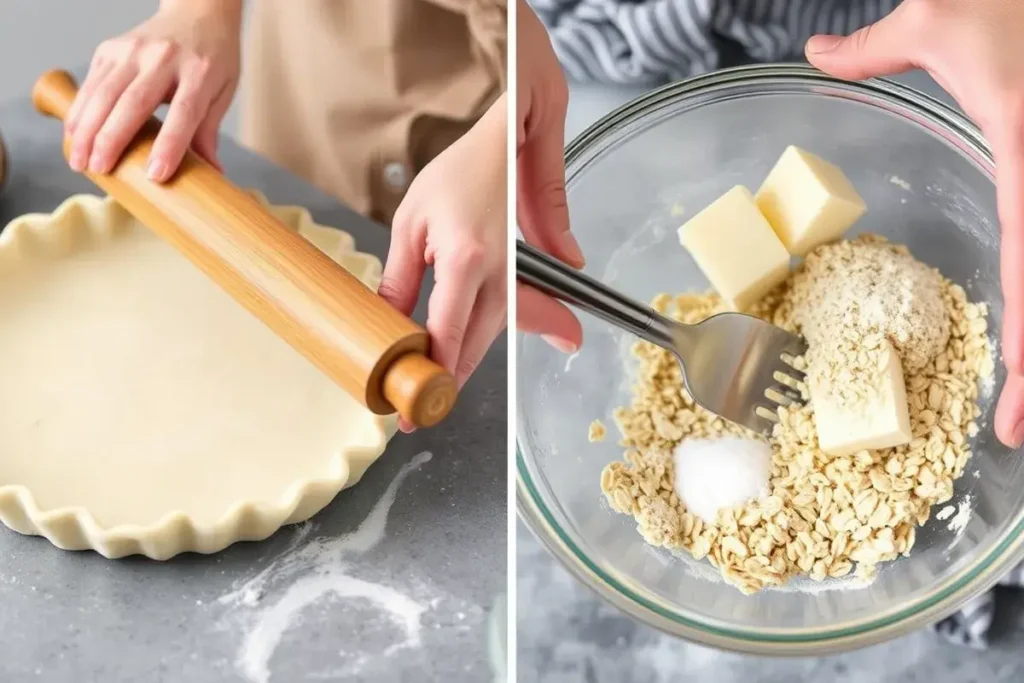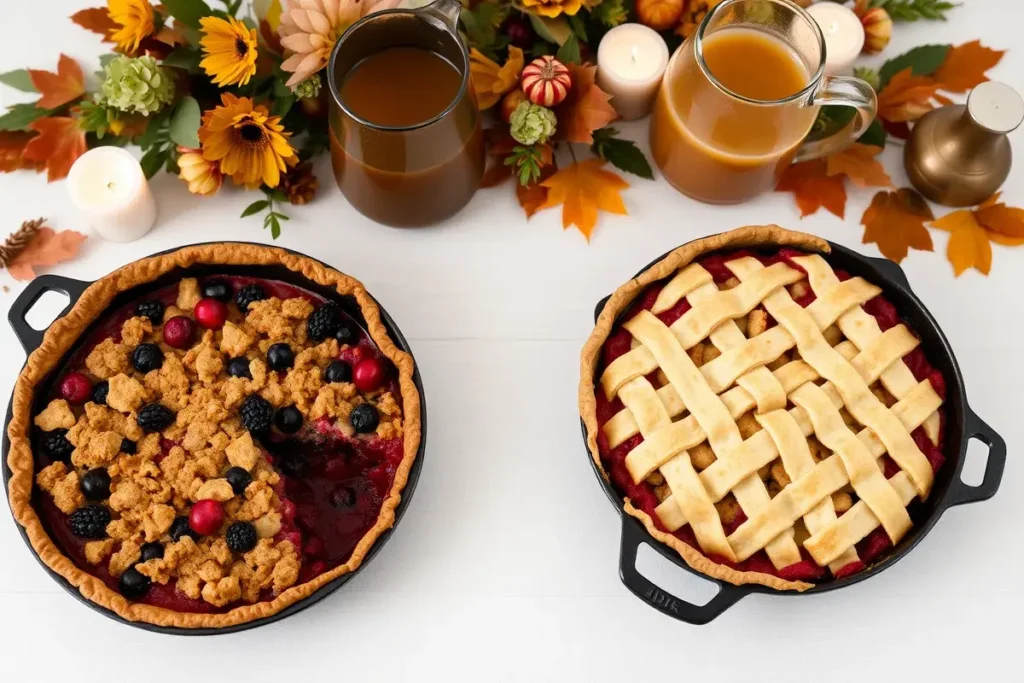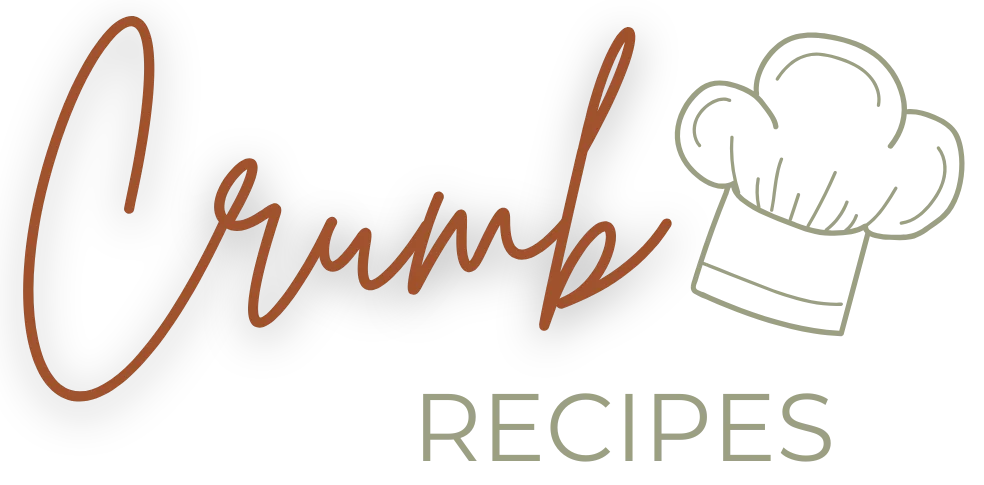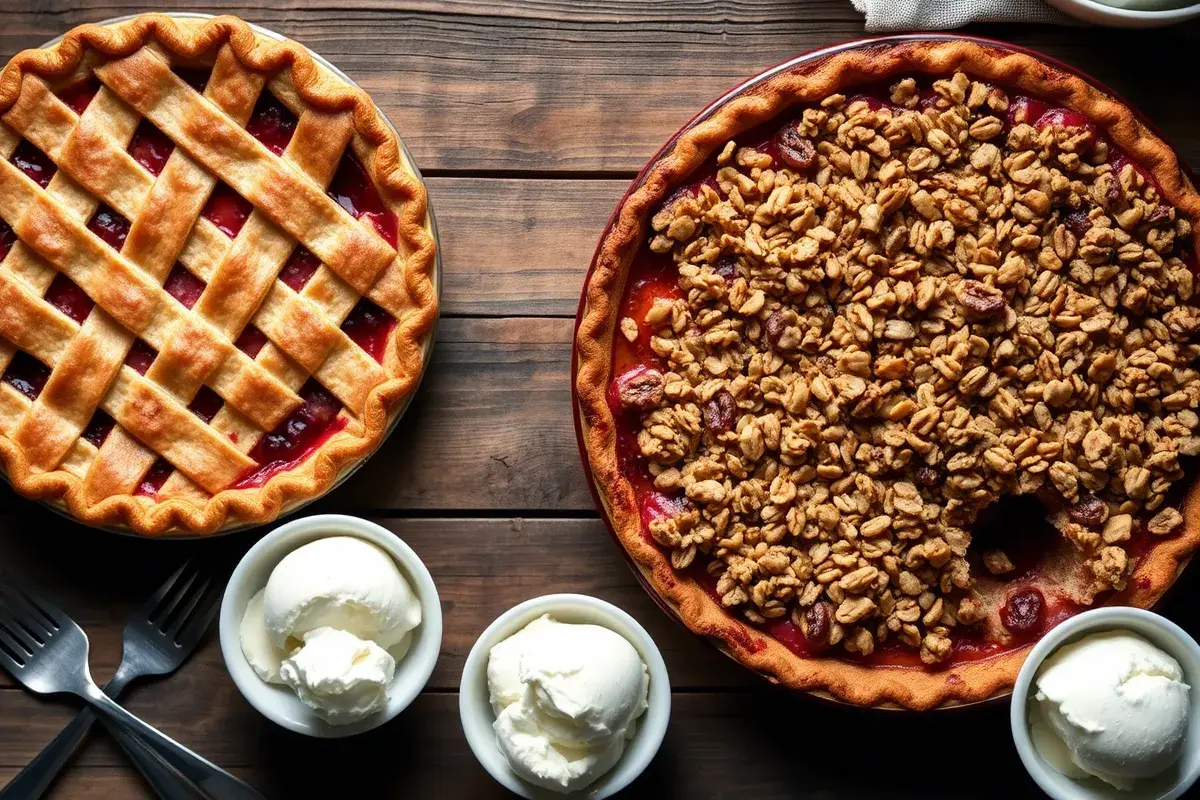Dessert lovers often face a delightful dilemma: What’s the difference between a pie and a crisp? Both treats are sweet, comforting, and endlessly adaptable. However, pies and crisps vary significantly in structure, ingredients, and overall taste. Therefore, understanding their differences can help you pick the perfect dessert for any occasion.
Pies usually include a bottom crust, a possible top crust, and a sweet or savory filling. In contrast, crisps feature a simple fruit base topped with a crumbly mixture of butter, flour, and sugar. Although you can customize both with fruits like apples, peaches, berries, or cherries, these two desserts offer distinct textures. Pies have a flakier, more substantial crust, while crisps boast a crunchy and buttery topping.
Moreover, pies have centuries of tradition behind them. They appear in countless cuisines and often represent comfort and nostalgia. Meanwhile, crisps are simpler to prepare because they do not require rolling out or crimping pastry dough. Therefore, you can mix up the crisp topping in minutes. Then, sprinkle it over sliced fruit and bake until golden brown.
In this article, we’ll explore every aspect of pies and crisps, including their histories, health factors, and cultural significance. We will also provide tips to help you bake them flawlessly and highlight what’s the difference between a pie and a crisp in every essential aspect.
Read on to discover how pies differ from crisps. We will delve into crust, filling, baking techniques, and ingredient variations. By the end, you will know precisely which dessert suits your needs. Furthermore, you will learn how to experiment with each recipe to make it your own. Let’s dive right in!
1. Exploring What’s the Difference Between a Pie and a Crisp?
What’s the difference between a pie and a crisp? It all starts with basic construction. Pies commonly include a bottom crust made from pastry dough. This dough consists of flour, fat (usually butter or shortening), and a small amount of liquid. Some pies may also have a top crust or a lattice design. The crust helps contain the filling and influences the dessert’s overall texture and flavor.
Crisps, however, use a topping rather than a crust. That topping often consists of butter, sugar, and flour. Some recipes also include oats or chopped nuts for extra crunch. Unlike pies, crisps don’t have a separate bottom crust. Instead, the fruit forms the base layer. Because of this simpler structure, crisps usually come together faster than pies.
1.1. Historical Overview
- Pie Origins: Early pies date back to ancient Egypt, Greece, and Rome. They were often used to encase savory meats. Sweet pies emerged later in medieval Europe, and the concept traveled to America with early settlers.
- Crisp Origins: Crisps are believed to be a more modern invention, appearing in American cookbooks in the early 20th century. During World War II, rationing encouraged home bakers to forgo pastry dough in favor of simpler crumb toppings.
However, the popularity of crisps soared, thanks to their straightforward method. Pies remained beloved classics, known for their decorative crusts and wide flavor range. Today, both desserts hold special places in American baking traditions.
1.2. Core Ingredients Comparison
- Pie Crust Ingredients: Flour, cold butter or shortening, salt, and ice water
- Crisp Topping Ingredients: Flour, softened or melted butter, sugar, oats, and sometimes nuts
These key ingredients influence texture. Pie crusts can be flaky or crumbly, depending on the fat used and how thoroughly it’s integrated. Crisp toppings lean more toward a crumbly, crunchy exterior, especially when oats or chopped nuts join the mix.

2. Crisp: An Incredibly Simple Concept
A crisp is essentially fruit plus topping. You slice or chop fruit, toss it with a bit of sugar, spices, and perhaps a thickener like cornstarch. Then you spread that fruit mixture into a baking dish. Next, you add the topping, which you can prepare in a single bowl.
For example, a classic apple crisp includes peeled and sliced apples, cinnamon, sugar, and flour. You blend butter, brown sugar, flour, and rolled oats for the crisp topping. After sprinkling it over the apples, you pop the dish into the oven until the topping turns golden brown.
2.1. Variations in Crisp Toppings
- Oat Topping: For a more rustic texture, use rolled oats. This version is sometimes called an apple crumble in certain regions.
- Nut Topping: For extra richness, add chopped pecans, walnuts, or almonds.
- Spice-Infused Topping: Experiment with nutmeg, cardamom, or allspice for enhanced aroma.
Crisps often require fewer steps than pies. Additionally, you don’t have to chill or roll out dough. Therefore, crisps become appealing options for impromptu gatherings. Furthermore, they are forgiving if you over-bake them slightly, as the topping still retains a pleasant crunch.
2.2. Why Choose a Crisp Over a Pie?
If you’re wondering what’s the difference between a pie and a crisp in terms of preparation ease, crisps win hands down.
- Time-Saving: No rolling or crimping dough.
- Less Equipment: You only need one mixing bowl and a baking dish.
- Versatility: You can use almost any fruit, fresh or frozen.
- Impressive Flavor: The combination of tender fruit and crispy topping delights most palates.
In many ways, a crisp offers the satisfaction of a fruit-based dessert without the labor-intensive crust. However, some people miss the buttery, flaky pastry of a pie. It all depends on what you crave.
3. The Roles of Crust, Toppings, and Fillings: Understanding What’s the Difference Between a Pie and a Crisp? Further
When answering What’s the difference between a pie and a crisp? you must consider crust, toppings, and fillings. Each dessert’s foundation—either pastry or crumb—contributes vastly different textures.
3.1. Crust and Topping Techniques
- Pie Crust: Usually needs delicate handling. You cut the fat into the flour until it reaches pea-sized clumps. Then, you add just enough water to bring the dough together. Overworking can lead to a tough crust.
- Crisp Topping: You stir melted or softened butter with sugar and flour until a crumbly mixture forms. You can keep it as chunky or fine as you like.
However, these techniques are easy to master with practice. Because pies require chilling, shaping, and potential blind-baking (for cream pies), they can be time-consuming. Crisps avoid many of those steps.
3.2. Filling Considerations
Pies and crisps often share the same fillings. For instance, both can feature apples, peaches, or berries. Yet the consistency differs:
- Pie Fillings: Thickeners like cornstarch or tapioca are often used to contain juices, preventing soggy crusts.
- Crisp Fillings: Usually fruit-forward and juicy. Some liquid seeps into the crumb topping, adding moistness.
For those who crave more texture variety, pie fillings can provide firmer fruit pieces, especially if you partially cook the filling beforehand. Conversely, crisp fillings generally soften more during baking. Therefore, your choice may depend on whether you prefer distinct fruit chunks or a softer, more homogenous filling.
4. What’s the Difference Between a Pie and a Crisp? Key Flavor Differences
Flavor depends on several factors, including how the crust or topping interacts with the fruit. In pies, the crust lends a neutral, buttery backdrop. Meanwhile, crisps have a sweet, crunchy covering that can sometimes dominate the fruit flavor if heavily sugared.
4.1. Balancing Sweetness and Tartness
- Pies: The crust can counterbalance intense sweetness. You can adjust the sugar in the filling for a less sweet result.
- Crisps: The topping is inherently sweet. Therefore, you might reduce sugar in the fruit mixture to prevent an overly sugary dessert.
For example, consider an apple pie versus an apple crisp. The classic double-crust apple pie leans on a buttery base and top, allowing the apples to shine through. An apple crisp, on the other hand, has a distinctly sweet, caramelized top layer. The fruit inside often tastes more caramel-like due to sugar interacting with butter as it bakes.
4.2. Spices and Aromatics
Pies and crisps both welcome aromatic additions like cinnamon, nutmeg, or lemon zest. However, pies may use a broader range of spices within the filling or even in the crust itself. Crisps typically rely on fruit juices to create flavor synergy with the topping. Nevertheless, that synergy can be remarkable when done right.
5. Health Aspects: Another Look at What’s the Difference Between a Pie and a Crisp?
Desserts aren’t typically “healthy,” but you can make pies or crisps more nutritious with mindful ingredient choices. You can reduce sugar, switch to whole-grain flours, or incorporate oats. Therefore, if you’re asking what’s the difference between a pie and a crisp regarding health factors, the crust’s fat content is often higher in pies, while crisps focus more on topping composition.
5.1. Calorie and Fat Content
- Pies: The crust usually contains a considerable amount of fat. Some recipes call for more than one stick of butter or a combination of shortening and butter.
- Crisps: The topping also has butter and sugar, but the overall quantity might be less than what’s used in a double-crust pie.
However, portion size matters. A small slice of pie might have fewer calories than a large bowl of crisp. Therefore, the best approach to healthier dessert choices involves moderation.
5.2. Incorporating Healthier Ingredients
- Whole-Grain Flour: Replace a fraction of all-purpose flour with whole-wheat or spelt flour in pie crusts or crisp toppings.
- Less Sugar: Rely on naturally sweet fruits to reduce added sugar.
- Add Nuts and Seeds: Boost nutrient density by sprinkling chopped nuts or seeds into your crisp topping.
- Vegan Options: Use coconut oil or vegan butter for both crusts and crisp toppings if you follow a plant-based diet.
Desserts can still be indulgent while including wholesome upgrades. Focus on fresh, high-quality fruit, and your pies or crisps will automatically taste brighter and more satisfying.
6. Perfecting the Texture: Crisp vs. Crumble
Many bakers interchange the terms “crisp” and “crumble.” Yet the difference often lies in the topping. A crisp typically includes oats, which help it “crisp up” in the oven. A crumble generally omits oats. Instead, it relies on flour, sugar, and butter. Some regions, however, use the words interchangeably.
6.1. Tips to Achieve the Perfect Texture
For Pies
- Pre-Bake (Blind Bake): If you’re making a custard or cream pie, pre-baking the crust can keep it from becoming soggy.
- Keep It Cold: Chilled ingredients help create a flaky crust. Warm butter can lead to a dense, greasy result.
- Vent the Top Crust: If you’re making a double-crust pie, cut slits to allow steam to escape.
For Crisps
- Use Cold Butter: If you want larger crumbs, keep the butter cold and work it into the flour just until crumbly.
- Add Oats: Rolled oats enhance crunch and texture.
- Watch the Baking Time: Over-baking can burn the topping. Check midway to ensure even browning.
Therefore, paying attention to these details can transform your dessert from good to outstanding. The key lies in balancing the moisture of the filling with the crispiness or flakiness of the outer layer.
6.2. How to Avoid Sogginess
- Thickeners: Use cornstarch or tapioca in pie fillings.
- Drain Excess Liquid: Some fruits like berries release a lot of juice. Drain or reduce it before baking.
- Proper Temperature: Bake pies and crisps at the recommended heat to ensure the filling bubbles and thickens.
In a crisp, you want juicy fruit, but you don’t want a watery mess. Therefore, add enough flour or cornstarch to bind the juices without creating a gummy texture.
7. Ingredient Substitutions for Pies and Crisps: More on What’s the Difference Between a Pie and a Crisp?
Sometimes you can’t find certain ingredients. Or you might need to accommodate dietary restrictions. What’s the difference between a pie and a crisp in terms of ingredient substitutions? Both are fairly flexible, though pies are slightly trickier due to the need for proper dough structure.
7.1. Flour Substitutions
- Gluten-Free Blends: Use a store-bought gluten-free flour mix in pie crusts. You might need extra xanthan gum for elasticity.
- Almond Flour: Adds a nutty flavor to crisp toppings. It can also work in pie crusts, but you’ll need a binder, like an egg.
7.2. Butter or Fat Substitutions
- Vegan Butter: Great for both pies and crisps. Look for one with a high fat content to mimic real butter.
- Coconut Oil: Works best for crisps. It’s solid at cooler temperatures, which helps create a crumbly topping.
7.3. Sugar Substitutions
- Maple Syrup or Honey: Ideal for crisps. Drizzle directly onto fruit or stir into the topping.
- Coconut Sugar: Offers a rich, caramel-like flavor, perfect in both pies and crisps.
Moreover, feel free to experiment. Desserts can be highly customizable, so you can adapt them for vegan diets, gluten-free lifestyles, or reduced-sugar needs without losing core taste or texture.
8. Cultural Relevance of Pies and Crisps: A Different Look at What’s the Difference Between a Pie and a Crisp?
Pies have a storied history across many civilizations. For instance, the British love meat pies and fruit pies alike. Americans often associate apple pie with national pride. Similarly, many cultures have their own interpretations. The French tarte is somewhat akin to an open-faced pie.
Crisps, while newer, have become a staple in American baking. Apple crisp is especially popular during autumn, when apples are in season. However, berry crisps peak in summer, highlighting fresh strawberries, blueberries, or raspberries.
8.1. Symbolism and Traditions
- Apple Pie: Often symbolizes American heritage. People mention it in the phrase “as American as apple pie.”
- Holiday Pies: Pumpkin pie at Thanksgiving, pecan pie in the South, sweet potato pie in African American cuisine.
- Fruit Crisp Gatherings: Perfect for family picnics or potlucks, thanks to their simplicity and robust flavor.
8.2. Global Variations
- Crumbles in the UK: Similar to American crisps, but usually without oats.
- French Galettes: Rustic, free-form pies with less fuss, bridging the gap between crisp and pie.
- Australian Meat Pies: Savory pies are famously enjoyed at sporting events.
Desserts evolve with cultural exchange. Therefore, pies and crisps stand as proof that simple ingredients can capture the hearts of many around the globe.
9. Common Baking Mistakes
Even seasoned bakers encounter mishaps. Knowing how to avoid them will help you master both pies and crisps.
9.1. Overworking the Dough (Pie)
Working pie dough too much can lead to toughness. Therefore, handle it gently. Stop mixing once it forms a shaggy ball. Allow it to rest in the fridge before rolling.
9.2. Not Enough Thickener (Pie and Crisp)
Too little cornstarch, flour, or tapioca can make your fruit fillings runny. Always follow the recipe’s guidelines. Adjust slightly if your fruit is extra juicy.
9.3. Under-Seasoning
Some bakers skimp on salt in dessert recipes. However, a pinch of salt can enhance sweetness. Whether you’re making pie crust or crisp topping, salt provides depth of flavor.
9.4. Inconsistent Baking Time
Ovens differ. Always check your pie or crisp a few minutes before the recommended baking time. If it looks almost done, test the fruit with a fork. If the fruit is tender and the topping is golden, your dessert is ready.
10. Serving Suggestions: Hot or Cold?
You can serve pies and crisps warm, at room temperature, or chilled. Each temperature highlights different qualities of the dessert.
- Warm Pie: The filling is gooey, and ice cream melts on top.
- Room Temperature Crisp: The topping remains crunchy, and the flavors are well-balanced.
- Chilled Slice of Pie: The filling firms up, which can be ideal for cream pies or pies with delicate fillings.
Therefore, decide which texture you prefer. If you want a comforting treat on a cold night, serve a warm apple crisp with vanilla ice cream. For a summer picnic, a chilled berry pie might be more appealing.
11. Pairing Ideas for Pies and Crisps
Desserts shine even brighter with complementary side items. Consider these pairings to elevate your sweet course.
11.1. Ice Cream and Whipped Cream
- Vanilla Ice Cream: Classic partner for warm apple pie or peach crisp.
- Cinnamon Ice Cream: Ideal for spiced pies.
- Whipped Cream: Light, airy topping that suits fruit pies and crisps equally well.
11.2. Sauces and Garnishes
- Caramel Sauce: Drizzle over apple crisps or pumpkin pies.
- Chocolate Shavings: Sprinkle over banana cream pie.
- Fresh Berries: Garnish lemon pies or berry crisps to add a pop of color.
11.3. Beverage Pairings
- Coffee or Tea: Cuts through sweetness.
- Dessert Wine: A fortified wine or sweet Riesling can complement fruit pies.
- Sparkling Water or Lemonade: Refreshes the palate between bites of rich dessert.
Using these pairings, you can create a memorable dessert course. For family gatherings or dinner parties, plating a slice of pie or a bowl of crisp with a scoop of ice cream often garners applause.
12. What’s the Difference Between a Pie and a Crisp? FAQ
Below are some frequently asked questions that people also ask about pies and crisps. These questions cover common concerns, from preparation techniques to dietary restrictions. If you’re still curious about what’s the difference between a pie and a crisp, this section might answer your lingering queries.

12.1. Can I make a crisp without oats?
Yes. If you omit oats, it becomes closer to a crumble. You can replace oats with extra flour or chopped nuts to retain a crunchy texture. However, your crisp will still bake beautifully and taste delicious.
12.2. How do I keep pie crust from shrinking?
Use chilled dough and avoid stretching it when fitting it into the pie dish. Let the dough rest in the fridge for about 30 minutes before baking. Also, line the crust with parchment paper and pie weights if you’re blind-baking.
12.3. Can I use frozen fruit for pies and crisps?
Absolutely. Thaw and drain the fruit first. Therefore, you prevent excess moisture, which can make your filling too runny. You might need additional thickener for juicy fruits like strawberries.
12.4. Are there gluten-free pie and crisp options?
Yes. You can use a gluten-free flour blend for the crust or topping. Oats are naturally gluten-free, but check labels to ensure they aren’t cross-contaminated. Additionally, use certified gluten-free thickeners.
12.5. Can I prepare these desserts in advance?
Yes. For pies, you can bake a day early, then reheat gently if you prefer warm slices. Crisps taste best the same day, but you can assemble the fruit and topping separately. Refrigerate, then bake when ready.
12.6. Is it better to use shortening or butter for pie crust?
Butter gives a richer flavor, while shortening often yields a flakier texture. Many bakers use a combination of both. However, the choice depends on personal preference. Try different ratios until you find your perfect crust.
12.7. How long can I store leftover pie and crisp?
Store pies covered in the fridge for up to four days. Crisps stay fresh at room temperature for about two days but can also be refrigerated. Reheat crisps to revive the crunchy topping.
13. Conclusion: Summarizing What’s the Difference Between a Pie and a Crisp?
What’s the difference between a pie and a crisp? The answer lies in the crust, topping, and overall texture. Pies feature a buttery, flaky pastry, which supports and encases the filling. Crisps rely on a simple crumbly topping that transforms fruit into a warm, bubbly delight.
Although both desserts share similar fillings, the crust or topping shapes their unique characteristics. Pies may symbolize tradition, especially during the holidays. Crisps, on the other hand, offer a quick yet scrumptious solution for satisfying sweet cravings.
Therefore, your choice depends on time, preference, and skill level. If you love rolling dough and shaping a perfect crust, pies might be your go-to. If you want a convenient dessert that celebrates fruit flavor, crisps could be your new favorite. Either way, you’ll be rewarded with mouthwatering aromas and nostalgic comfort.
In the end, both pies and crisps stand as timeless treats. They allow creative expression, whether you’re mixing fruits, spices, or toppings. So, if you’ve ever asked yourself, “What’s the difference between a pie and a crisp?”—you now have the complete answer. Bake one of each to experience the best of both worlds.

